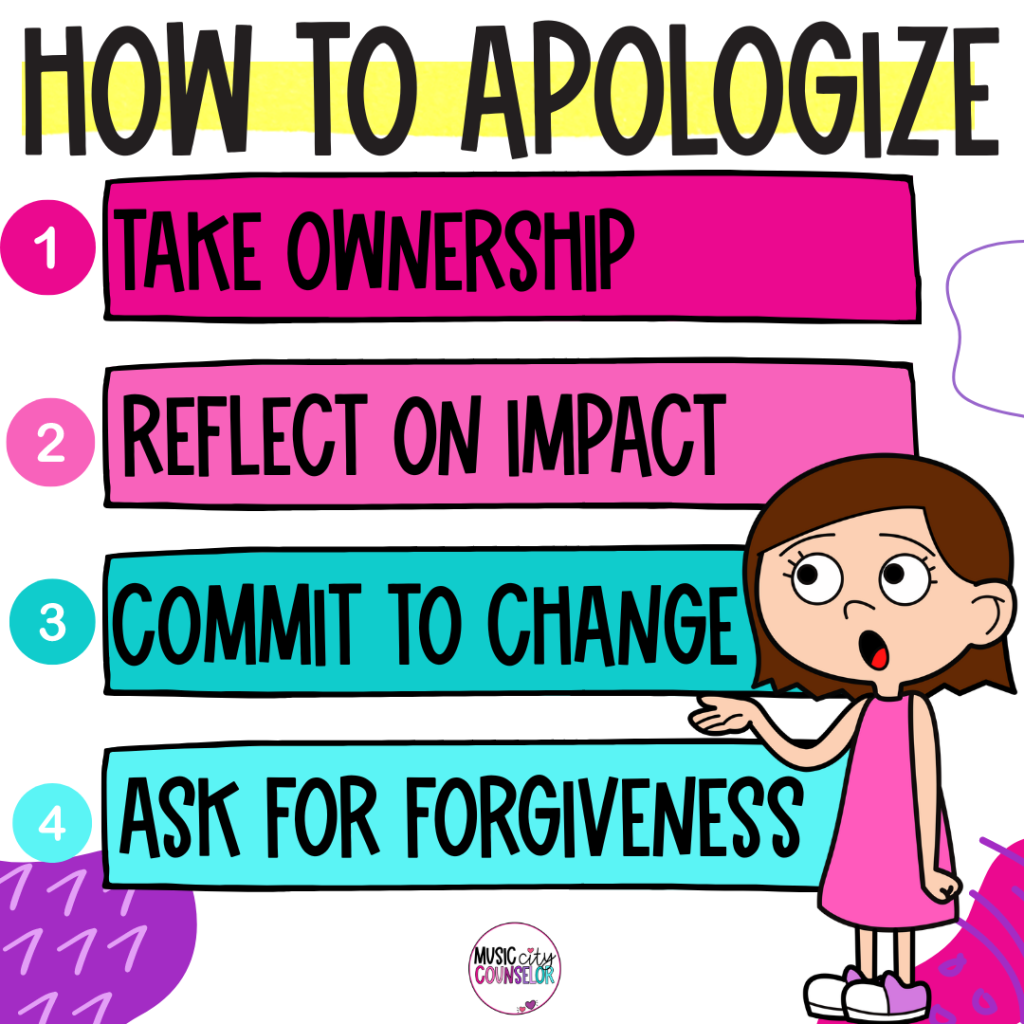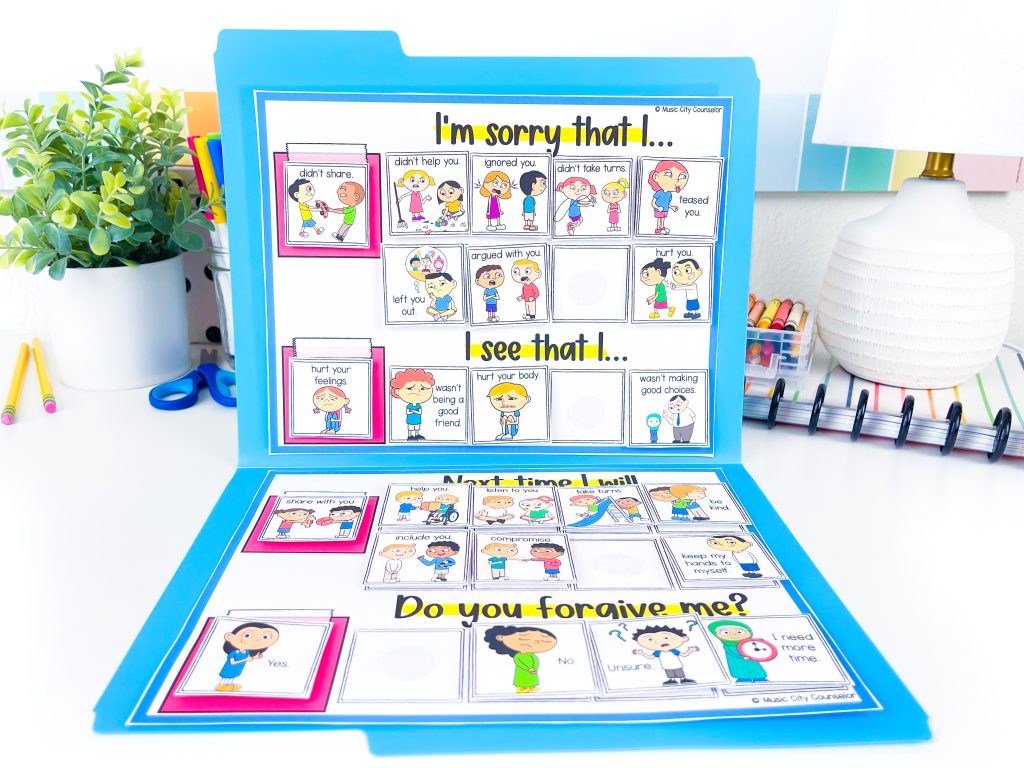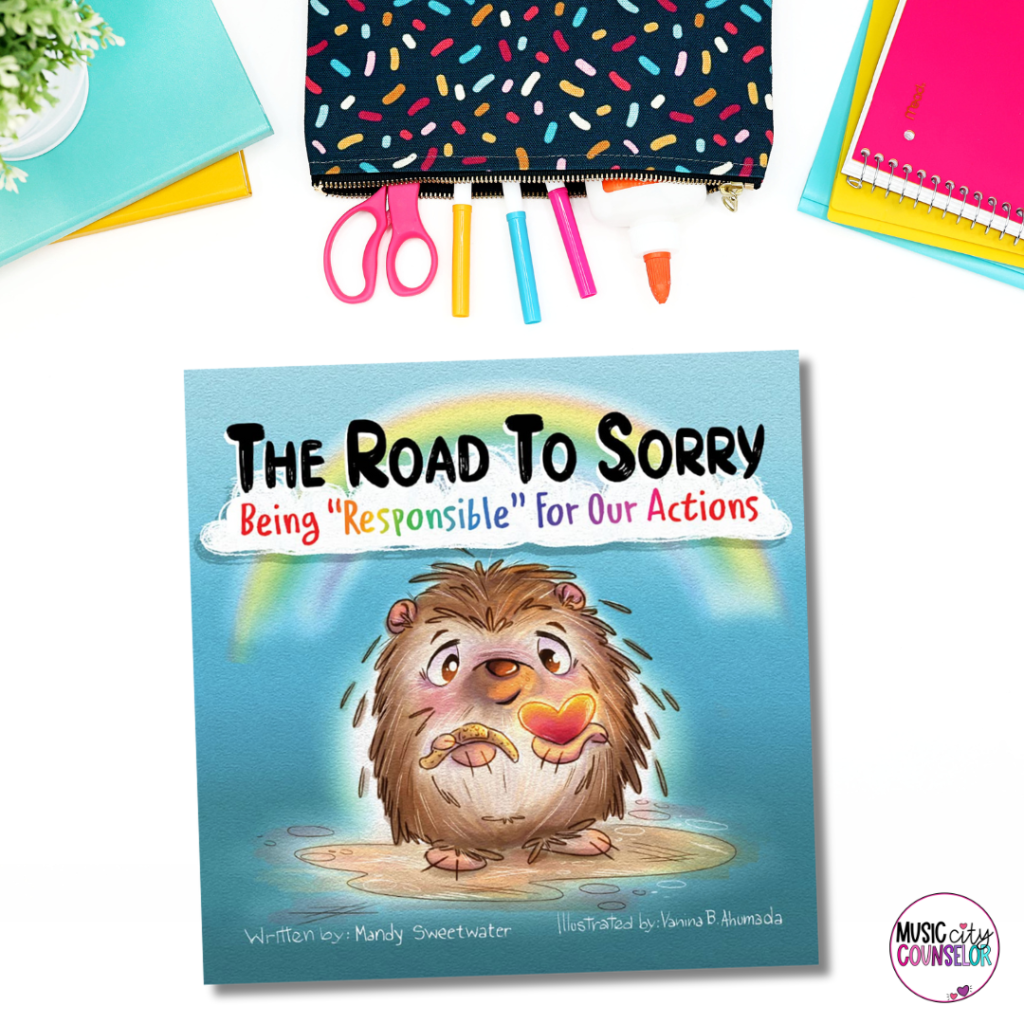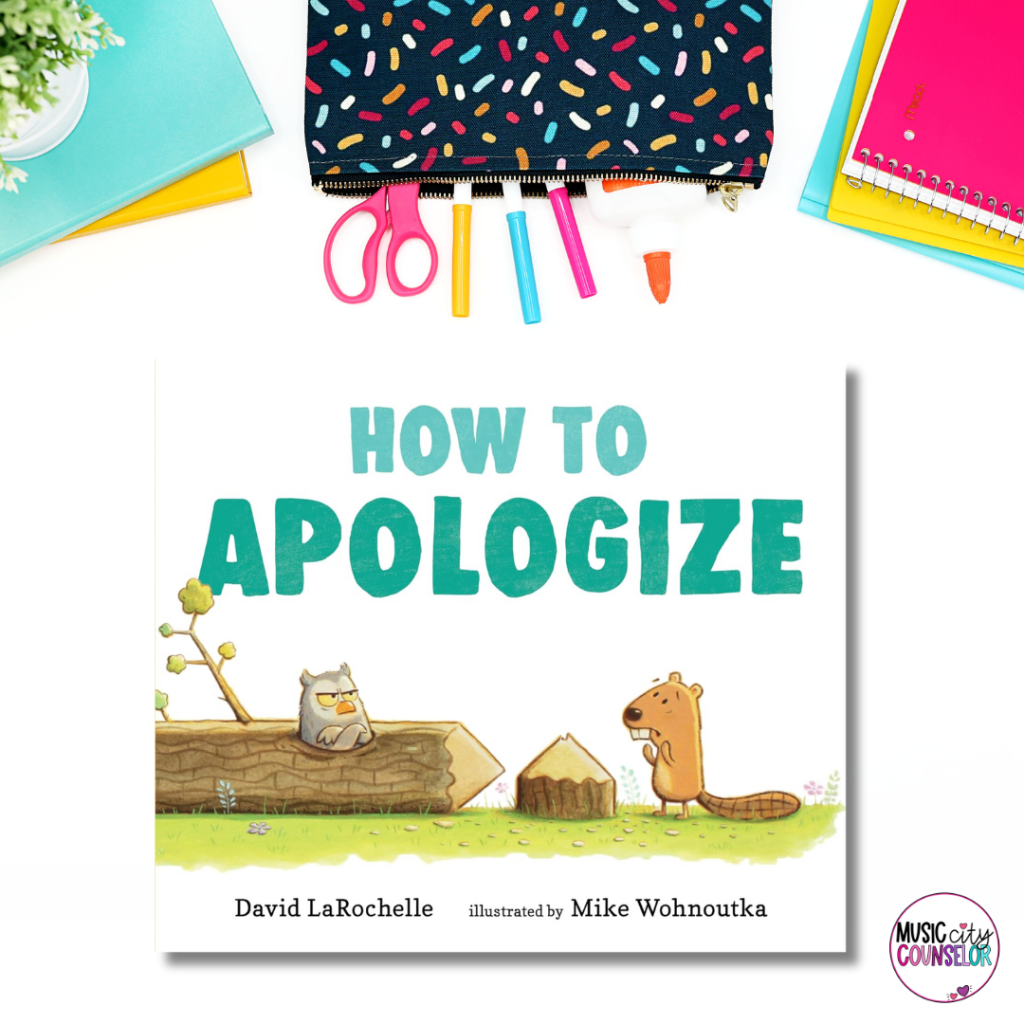
Learning to apologize is a crucial tool that helps students grow their social skills, conflict resolution skills, and friendships! But, most of our kids don’t know how to do it! That’s where we step in – school counselors play a crucial role in teaching students to apologize effectively and take ownership of their actions!
4 Steps to Teaching Students How to Apologize
Children always learn best when the information presented to them is easy to understand and manageable. This 4 step process for learning how to apologize is just that!

1. Take Ownership
The first step in the apology process is taking ownership of your actions. Encourage students to begin with “I’m sorry that I…” followed by specifically acknowledging their behavior.
Examples:
- “I’m sorry that I took your pencil without asking.”
- “I’m sorry that I wouldn’t let you play with us at recess.”
2. Reflect on Impact
After students have acknowledged their actions, they need to reflect on the impact their choice had on others. This step fosters empathy and helps students recognize that their actions have consequences greater than themselves.
A great way to start this is by saying “I see that I made you feel…”
Examples
- “I see that I made you feel upset when I took your pencil without asking.”
- “I see that I made you feel hurt and lonely when I told you that you couldn’t play with us.”
3. Commit to Change
The third step in this apology process is for a student to share what they will do differently in the future to avoid repeating the same mistake or behavior.
This step empowers students to think proactively and practice personal growth. Teach students to say “Next time I will…”
Examples
- “Next time I will make sure to ask before borrowing anything from you.”
- “Next time I will welcome you to our game or suggest a new game that we can all play together.”
4. Ask for Forgiveness
The final step in teaching students how to apologize is to directly ask others for forgiveness. This step shows humility and respect toward others’ feelings.
Encourage students to ask, “Do you forgive me?”
How to Practice Apologizing
There are several easy ways to help your students practice apologizing. Role-playing, done-for-you resources, and storybooks are great options!
Role-Playing
One of the best ways to reinforce learning of new skills is to practice them through role-playing! Let students work through the 4-step apology process with a partner or in small groups.
Let students create their own conflicts or provide them with prompts.
Done-For-You Resources

Another great way to help students practice apologizing is by using done-for-you resources like this Apologize Lap Book.
This interactive resource teaches the 4-step apology process and then allows students to practice each step through different real-world situations.
For students who need additional support in creating heartfelt and sincere apologies, let them keep an individual copy in their desk or cubby for easy reference. It’s also a great tool for your classroom Calm Corner!
Pro Tip Shared by a Teacher Reviewer
Use Lap Books during class calendar time each morning. Call it “me time.”
When teaching or reinforcing a new topic (like how to apologize), everyone can use the same folder topic during “me time”. Other times, students use different lap books to best suit their emotional needs of the day.
You can also find the Apologize Lap Book in the School Counseling & SEL 8 Lap Book BUNDLE. This set covers anxiety, divorce, grief, and more!
Use Books
Storybooks are another great way to reinforce important learning topics like apologizing. Check out these two favorites– they’re perfect to add to your office or classroom library! (Amazon Affiliate Links)
“The Road to Sorry” by Mandy Sweetwater

This rhyming story follows a set of forest animals who learn that saying “sorry” is just the first step in an apology. Everyone makes mistakes of all sizes, and that’s okay! What matters most is that you take responsibility for your actions and work towards forgiveness.
This book highlights the 4-step apology process as children learn to recognize what they did wrong, be genuine as they apologize, consider how others respond, and think about what they can do to make the situation right again.
“How to Apologize” by David LaRochelle

This kids’ book is a guidebook filled with humor to keep engagement levels high. It is full of practical tips about all the times, reasons, and ways to say sorry. Readers see that mistakes are a normal part of life, but the way one responds to them is what makes the difference.
Children learn that even though apologizing may feel hard, it doesn’t need to be complicated! Apologies can be simple and sincere.
Teaching students how to apologize is a valuable life skill that extends far beyond the classroom! By guiding them through the four-step apology process and providing meaningful activities to reinforce learning, you nurture empathy and positive relationships among the students in your school.



Leave a Reply